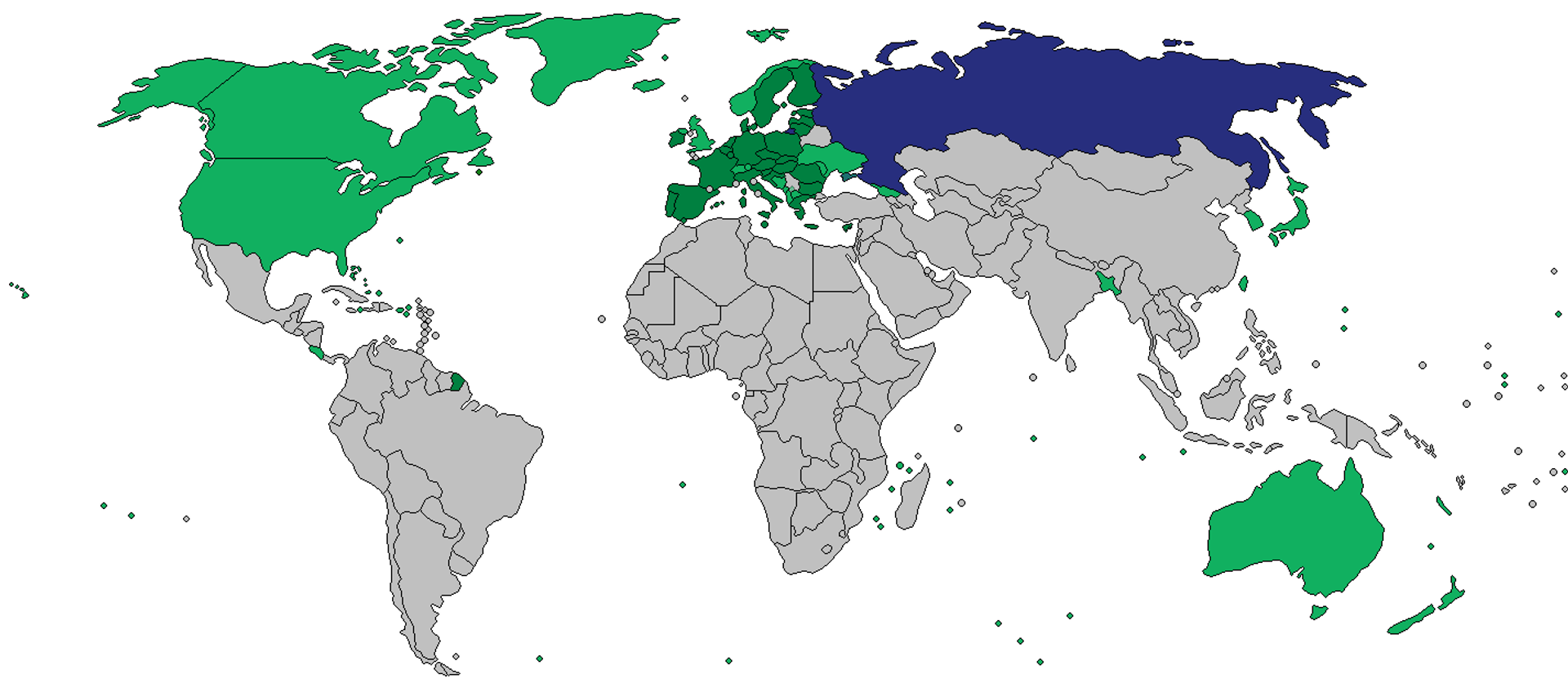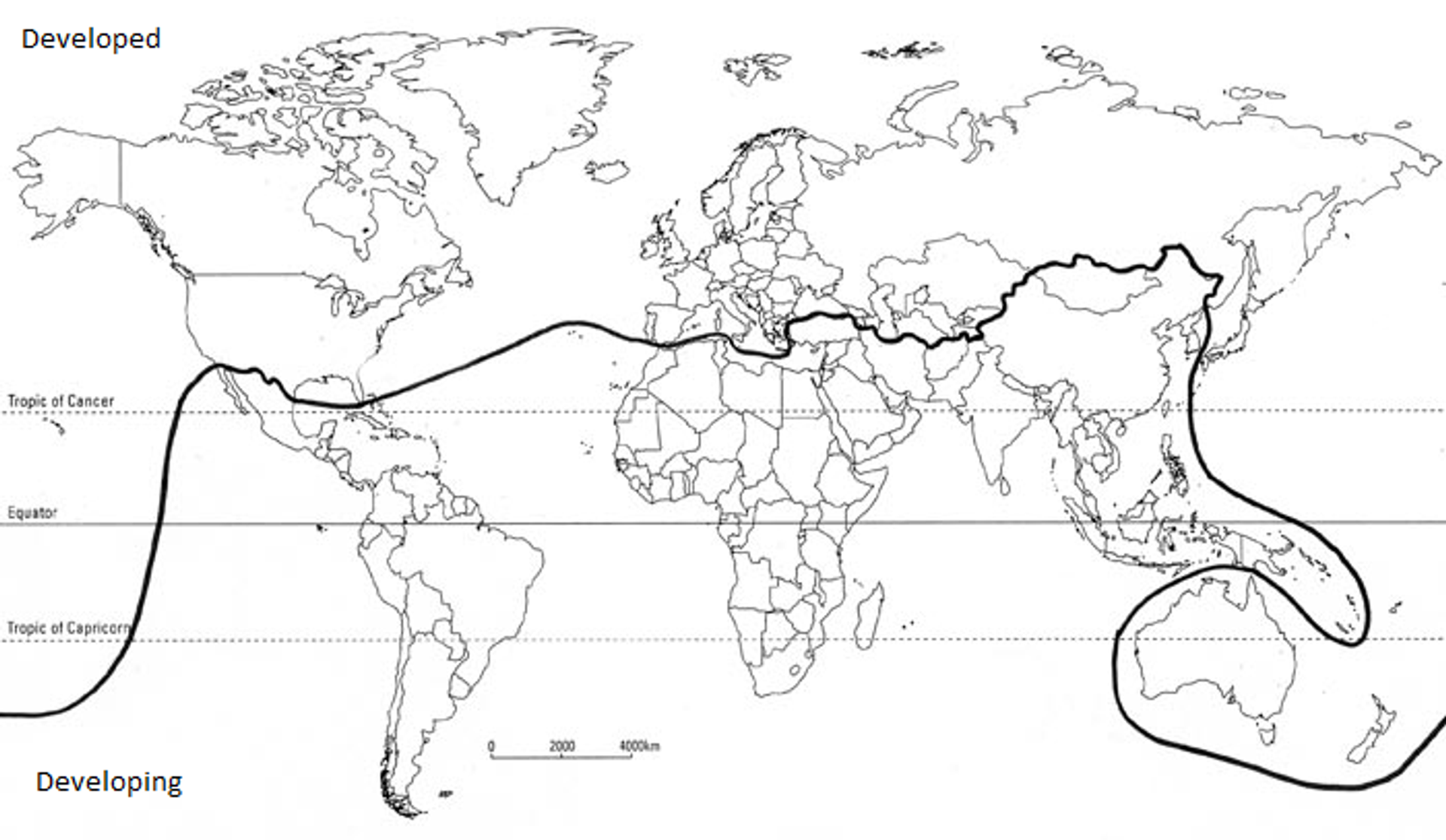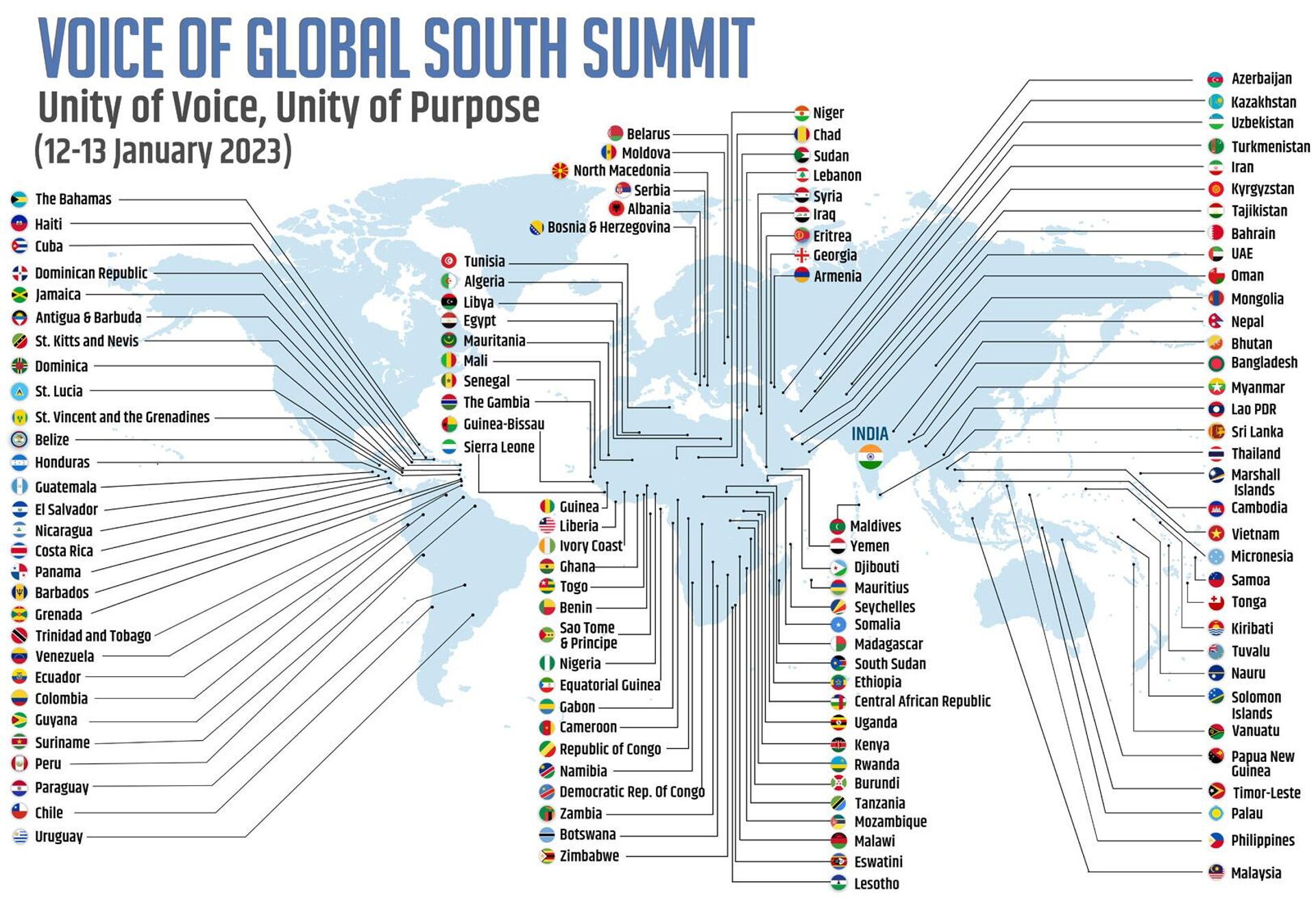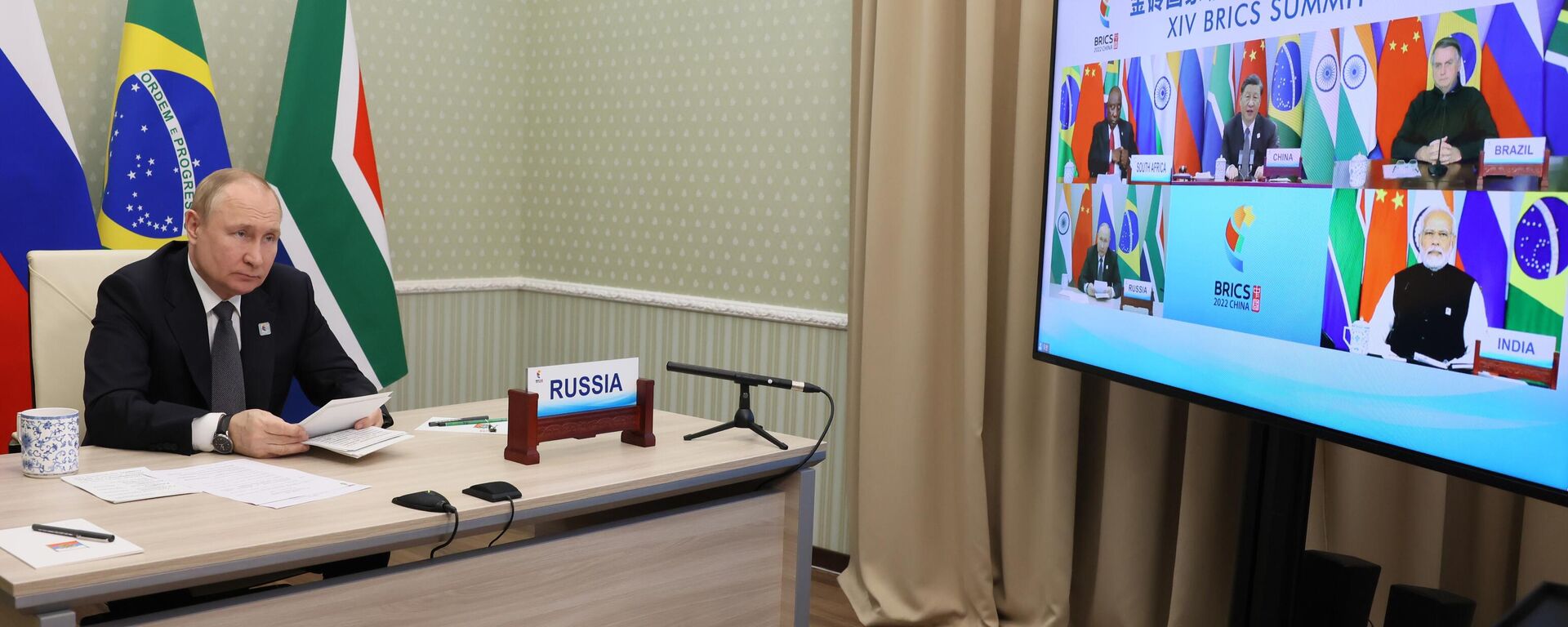What is Global South's Role in Overthrowing Western-Led World Order?
15:54 18.08.2023 (Updated: 16:22 18.08.2023)
Subscribe
Longread
The Global South, which includes numerous but disparate countries of Africa, Asia and Latin America, is no longer just an academic term. Amid the crisis in Ukraine, these nations began to demonstrate their power by resisting Western influence. Check out Sputnik’s explainer to learn more about the Global South and its countries.
Academic and public interest in the term "Global South" has surged over the past year-and-a-half amid the fundamental transformations being observed in the global political, military and economic order during the ongoing NATO-Russia proxy war in Ukraine and a US-led effort to constrain China’s growing global economic might and geopolitical influence.
As South Africa prepares to host dozens of leaders from Africa and other Global South nations at the BRICS Summit in Johannesburg next week, US business media have sounded the alarm about the Global South's growing refusal to toe Washington’s line on policy against Russia, or the standoff with China. Instead, many have shown a growing readiness and ability to act as sovereign and independent actors on the world stage.
What is the Global South? How is It Defined?
The term "Global South" first emerged during the Cold War to refer to the broad economic divisions between richer, generally industrialized northern nations and developing countries of the south, many of which until as late as the 1960s and 1970s remained part of Western European colonial empires or continued to be subjugated by Western neocolonialism.
Carl Oglesby, an American writer, academic and political activist is widely credited with being the first to use the term Global South in its contemporary meaning, doing so in 1969 in reference to the Vietnam War and to explain how the "dominance" of the Global North through centuries of exploitation gave rise to an "intolerable" global "social order."
Broadly speaking, Global South refers to refer to lower-income countries, or nations with a relatively low level of socio-economic and industrial development compared to wealthier northern nations.
Being a Global South nation can have all sorts of implications, from higher infant mortality rates and lower life expectancy to lower education rates, high levels of poverty, and a higher propensity to migrate in search of a better life abroad (which can in turn cause other economic and social problems, such as a dearth of educated professionals at home, and difficulties integrating in the new home country). At the same time, many of the problems created by wealthier, industrialized Global North nations, such as waste and pollution, often disproportionately affect Global South countries.
The disappearance of the Soviet-led political and economic bloc in 1991, the rise of the BRICS countries in the late 2000s, the trend toward deindustrialization in many Western countries and other developments have sparked academic debates about the validity of a term like "Global South" in the modern world. However, the clear division recently demonstrated between the West and the developing nations in the wake of the Ukrainian crisis, and the lack of willingness by the latter to break off economic relations with Russia and slap sanctions on Moscow, shows that the term continues to retain at least some measure of relevance and validity.

Map showing countries which have slapped sanctions on Russia (in green) after the escalation of the Donbass crisis into a full-blown NATO-Russia proxy war in Ukraine. The image shows that the vast majority of nations in the so-called Global South refrained from introducing restrictions on Moscow.
© Wikipedia / Zhitelew
What Countries are in the Global South?
Most contemporary maps showing the divide between Global North and Global South nations run roughly along the Tropic of Cancer, with Mexico and much of the Caribbean, South America, most if not all of Africa, the Middle East, Central, East and South East Asia (but not Japan, Australia or New Zealand) indicated as members of the Global South. The Global South represents upwards of 85 percent of the world's population, and close to 40 percent of global GDP.

One definition of the 'Developed' Global North vs. the 'Developing' Global South by the Independent Commission for International Development Issues, chaired by former West German Chancellor Willy Brandt. Circa 1980s.
© Wikipedia / Jovan.gec
Is China a Member? How About Turkey?
While some Global South nations have made dramatic strides in lifting large swathes of their populations out of poverty (and in the case of the BRICS bloc even coming to rival leading Western countries in terms of combined economic might), many, including China and Turkey, continue to identify themselves with the Global South, with such identification thought to assist in differentiating them from the West and its legacy of colonialism or neocolonialism, and helping to build new political and economic connections based on a sense of solidarity and belonging.
What is the Voice of the Global South Summit?
In January 2023, India hosted the first-ever Voice of the Global South Summit, a virtual forum which Delhi characterized as "a common platform to deliberate on the concerns, interests and priorities that affect…developing countries and also to exchange ideas and solutions, and most importantly, to unite in voice and purpose in addressing the concerns and priorities."
The summit was a success, with representatives from some 125 countries taking part, and the gathering becoming "the largest digital conference of the leaders and ministers of the developing world" ever assembled, according to India’s Foreign Ministry.
While the future potential of the Indian-led initiative is yet to be seen, it is perhaps the most significant attempt of its kind since the 1961 establishment of the Non-Aligned Movement to create a bloc-independent grouping of Global South nations in the 21st century.

Map of participants in the Voice of Global South Summit, hosted by India in January 2023. The list of participants included most of the countries traditionally associated with the Global South, apart from China and Pakistan.
© Photo Indian Ministry of External Affairs
What Kind of Future Can the Global South Expect?
The continued rise of the BRICS bloc, which includes four Global South nations (Brazil, India, China and South Africa), plus Russia, a non-Western member of the Global North seeking to establish the foundations of a multipolar world order, justifiably gives rise to hopes that the present socio-economic imbalances and inequalities between the North and South can gradually be resolved via the rise of alternatives to Western institutions and blocs to facilitate the South’s development and independence.
At the same time, growing concerns in Western countries about the rise of alternative power centers in the developing world indicates that the transition from unipolarity led by the United States and its allies to multipolarity probably won't occur without attempts by Western countries to hang on to their former colonial possessions using any and all available means.


